- Holy Spidey-Jamas! The Best Spiderman Kids Pajamas - April 1, 2023
- Weasel Deadpool Guide – How To Survive Your Friends And Influence Nothing! - March 15, 2023
Heroes can’t do everything alone. If one could, he’d be pretty dull (I’m looking at you, Man of Steel). Their supporting cast might include people like a mentor, a caretaker, or, most commonly: a sidekick. A Hero’s sidekick can do many things for them. They can be moral support, assistance in the field, comedy relief for the narrative, and on occasion, they can even keep their hero morally grounded.
But what about Anti-Heroes? Do they need sidekicks? If they have them, what are they like? Could a sidekick even survive an environment like that? Weasel is a character who answers those questions, even if he probably wishes he couldn’t.
You might also be interested in: Deadpool Characters Guide
Some Facts About Weasel
- His real name is Jack Hammer. (No one ever uses it, including his own mother.)
- He’s a standard “street-level” human physically and potentially even below average.
- His intellect is Genius-level and equal to Peter Parker’s.
- A passable marksman, a quick thinker, a master manipulator, and a brilliant inventor.
- He is an utter coward and will often run if given a chance. However, while he’s hopeless in unarmed combat, he’s shown to be very resourceful, using everyday objects to both hide and give him a chance to escape.
- He’s gained and lost at least a half-dozen different power sets.
- He first appeared in Cable #3 in 1993.
- Most recently appeared in Wolverine #22 in August of 2022.
- He’s apparently never allowed to be happy, despite not being a hero
“Heroic” Origins

Weasel’s story is one of sadness, despair, and constantly being in someone else’s shadow. He has been associated with Deadpool from the very second page of his existence (in 1993’s Cable #3), and that tragedy has not only followed him but gotten so much worse over time. In that first appearance, he establishes himself as a capable information broker.
He’s traveled through a war zone to get to the meeting, using only his wits, connections, and some gadgets. He’s portrayed as incredibly brave and scientifically-minded when after the villain threatens him, he identifies at a glance how the villain’s science-fiction machinery works and doesn’t even break a sweat.
Then he disappears from the issue. Now that’s not surprising. He was a bit player making a glorified cameo. However, as readers find out later, it is tragic.
He appears again in Deadpool’s first limited series: 1993’s Deadpool: the Circle Chase, showing off that gifted scientific mind and his conniving but clever networking abilities. He’s portrayed as Wade Wilson’s go-between, gadget man, a weapons dealer, and (charitably) friend. This relationship is expanded upon further in 1994’s Deadpool: Sins of the Past, and especially in Deadpool’s first ongoing series, Deadpool, which began in 1997.
It’s some time before we see how their relationship began. However, when we do, we discover that Jack Winston Hammer was a straight-A student at Midtown High. He was a classmate of Peter Parker and every bit the future Spider-Man’s intellectual equal. He had quite a bright future until a time-traveling Deadpool took him on a drinking binge that ultimately ruined his life so that Weasel would agree to fix Deadpool’s teleporter.
The worst part is that Deadpool knew it would ruin his life, and he didn’t care.
The Terrible Truth of Deadpool and Weasel’s Friendship
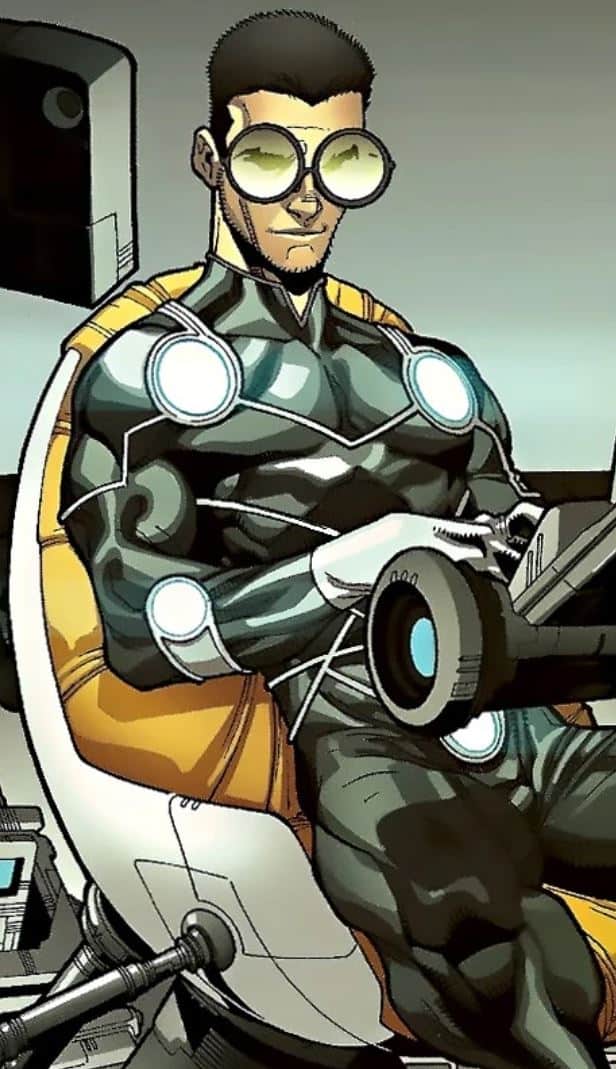
What might surprise the modern comic-book audience is that this relationship is not as sanguine as it is in the film. Deadpool’s characterization has fluctuated, much like most comic-book characters. His original incarnation is wildly different than the wisecracking, good-hearted smartass he’s shown to be in today’s comics and movies.
What matters with Deadpool, however, is that the same writing team handled a good chunk of that first ongoing series, giving him, his supporting cast, and most importantly to us, Weasel, a cohesive arc.
As he was introduced, Deadpool was a psychopath, in the technical sense of the term, and an anti-villain. He’s always been an assassin, and that hasn’t changed. What has changed, however, is who catches the brunt of his psychopathic tendencies. Today, villains and his targets get the worst of it. Early on? It was his “friends.” Sometimes, it was his “roommate” Blind Al. (I’ll get to those quotation marks in a minute.)
Most Often, it was Weasel who caught the brunt of Wade’s abuse.
Deadpool treated Weasel terribly. He made fun of him. He stiffed him on payments. He regularly threatened him. Their friendship was primarily based on the fact that Deadpool could reliably be expected to pay what Weasel asked and occasionally would protect him from “worse” people. For Deadpool’s part, it was because he had no other friends except for his hostage, Blind Al.
That’s right. Blind Al wasn’t a roommate but a hostage. Deadpool kidnapped her as part of a job, but his contact died before he could get paid. So he decided to keep this old blind woman. He went to her for advice. He’d joke around with her. And if she tried to escape or just pissed him off, he’d put her in “The Box.” A small room with no lights, full of sharp razor-sharp objects that would cut her if she moved at all.
Enough is Too Much! Weasel Leaves Deadpool
At one point, Weasel arrives at Deadpool’s house amid their adventures and meets Blind Al. Despite Wade’s wishes, he builds a friendship with her. Deadpool doesn’t like that. So he puts both of them in “The Box.” That was the final straw for Weasel. When he escaped the Box, he left Deadpool’s life and series.
That’s the last the audience sees of Weasel for a little while. Not long after that, Deadpool goes through his redemption arc, and part of it is apologizing to his only real friend. However, things are never really the same after that. There’s always a distance between them, which only grows over time. Weasel shows up less and less, and it’s implied to be because he’s trying to distance himself from Wade. He’s close enough to Deadpool to attend his funeral when it looks like the Anti-Hero has died.
Repairing a Friendship
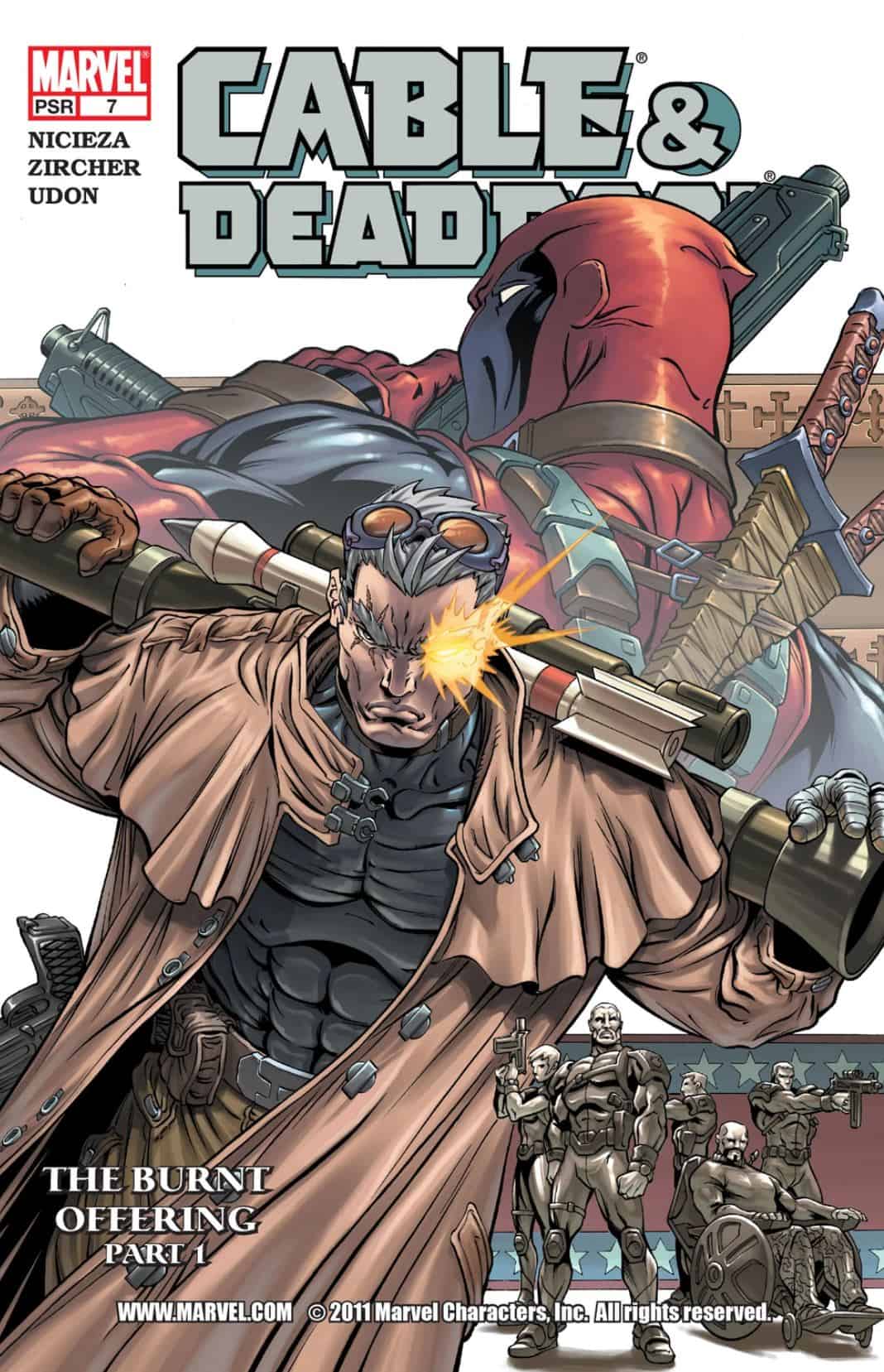
We don’t see him again until Cable and Deadpool #7 when he’s shown to operate as Deadpool’s information guy from a safe distance. He makes sporadic appearances (mainly over the phone and internet calls) until late in the comic’s run. As time has passed, Weasel feels comfortable enough around Wade to start assisting him in a more hands-on capacity. He’s become his weaponeer again, and he even helps him in the field.
In the later issues, Weasel is captured by HYDRA. (A criminal organization that has its roots in Nazi Germany). He uses his brain power to “invent” The Penetrator. He’s just improved the design of Wade’s teleportation belt and uses this to take over this particular sect of Hydra before shenanigans ensue, and he ends up teleported away.
Technically, Weasel and Deadpool end this specific series on good terms. Characterization has marched on, Wade abuses him less, and Weasel enforces boundaries. It’s good character growth for both of them.
It may not be surprising that it couldn’t last.
Weasel “without” Deadpool

Years pass between Weasel’s last appearance in Cable and Deadpool and his next appearance in 2010’s Deadpool #23. Weasel has spent the intervening time using his genius for his own benefit for a change. He’s built a robotic suit that can fly, has super-strength and repulsor beams, and he’s used this to become “The House,” protector of the Las Vegas strip. When Wade arrives, The House is tasked with bringing his old friend to justice.
This fight is brief, primarily because it shows off how dangerous Weasel can be. It’s not the first time that’s been done (Weasel’s gotten himself out of plenty of scrapes,) but it is the most definitive. The fact that it’s against his old “friend,” Deadpool, just makes the catharsis of this fight all the sweeter.
He uses his knowledge of the terrain, the enemy, and his suit to defeat and capture Wilson in record time. Then, just to bring things full circle, he shoves Deadpool into his own version of The Box.
He’s defeated here not by any combat ability but rather by his oldest weakness: believing Wade Wilson has his best interests at heart. Weasel lets Deadpool out of The Box and talks him into helping with a scheme, only to turn on Weasel and shove him right back into the Box.
But this isn’t the old Weasel. He doesn’t take this lying down. He breaks out of the Box, and goes to work, planning to enact his vengeance. He is recruited to a team led by “Macho Gomez,” another person slighted by Wade, and joins Macho, Blind Al, and a list of other characters that Deadpool has harassed, belittled and assaulted over the years. It doesn’t go well for Weasel’s life or characterization, but at least he tries!
This fight is as unfortunate as the previous one was glorious. Weasel is once again reduced to a bit player in his own story. Rather than being a glorious combatant and a valued part of the team, his part of the fight is reduced to him cowering, sure that Wade is going to do something horrible to him. Deadpool then takes the time to shout over the top of a giant melee, “Hey, Weasel! Come here so I can do something horrible to you!”
It’s disgusting.
All of the characterization and the development done to the character over a period of years is undone in a single instant. He’s no longer framed as the hero clever enough to make a suit rivaling Tony Stark’s. He’s back to being “Wade’s little buddy” and “Deadpool’s Whipping boy .”His side still technically prevailed, but Weasel himself is killed out of hand. It’s tragic, not just because it feels like an ignominious end for a character that had grown so much, but because it’s framed for laughs.
Of course, this is comic books, and death could be synonymous with the “man cold.”
Patient Zero
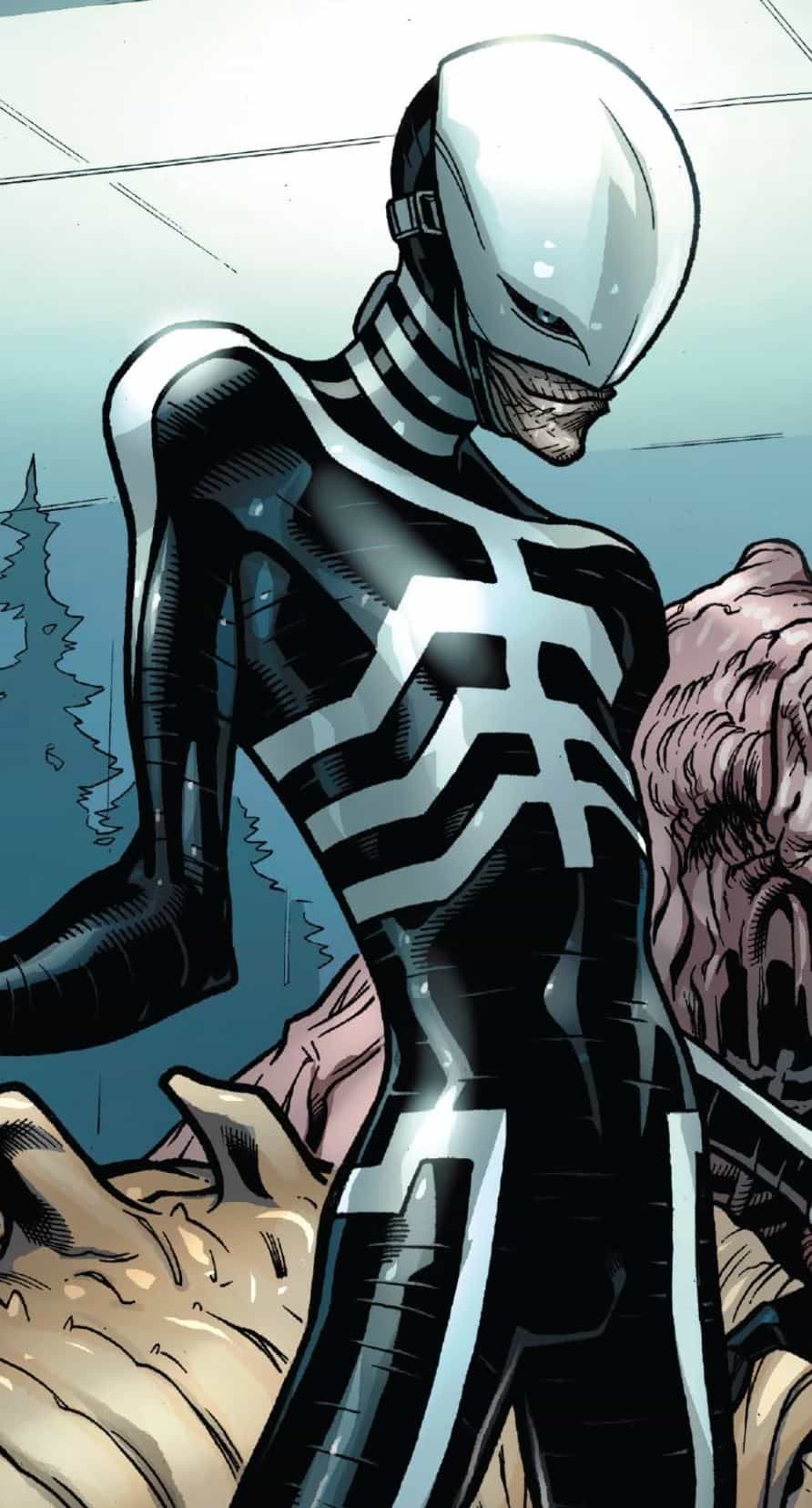
Cue Spider-Man/Deadpool #2, wherein we’re introduced to a new villain that is causing problems for the Web-Head and Dead-head. He’s dressed like a manga reject and mostly schemes from the shadows to cause problems as he monologues about hating Wade Wilson.
He’s a little dorky but very mysterious and highly competent at getting people to do what he wants. The only thing for sure about this character is that he hates Deadpool and tries every trick in the book to ruin Peter Parker’s life.
The internet at the time was buzzing with rumors about who this mysterious new threat could be, and Weasel emerged as the most likely candidate. Deadpool and Spider-Man track him to his lair, and Patient Zero releases a monster that combines the superpowers of his nemeses- Only to get diced to pieces by it before he can reveal his identity.
But, this is comic books, so what should be the end of his mortal existence is instead more akin to a short timeout. When Wade makes his way to Hell a few issues later (a place he was technically lord of at the time because comics are weird), he finds himself face-to-face with Patient Zero, who quickly reveals himself to be Wade’s old “friend.”
To his credit, Weasel takes Wilson to task for all the abuse he’s shoveled onto him over the years and straight up calls him a narcissist to his face. It doesn’t accomplish much, but it was some more catharsis for long-time fans of the character. Jack takes the opportunity to opine how, even when attending Midtown High, he was in Peter Parker’s shadow.
He chose Patient Zero because he was infected by man’s cruelty, first by Peter in High School and then by Deadpool for the rest of his life.
However, even in Hell, Weasel knows how to put his oldest and truest skillset to use. In Spider-Man/Deadpool #18, we find out that, although much of the plot of the comic has been orchestrated by the demon lord Mephisto to claim Peter Parker’s soul, a large part of it was Weasel’s own machinations to escape Hell, not once, but twice. He strikes one more deal with Mephisto to deal with Deadpool permanently.
Weaseling Out of Hell (Or, Where it Gets Complicated)
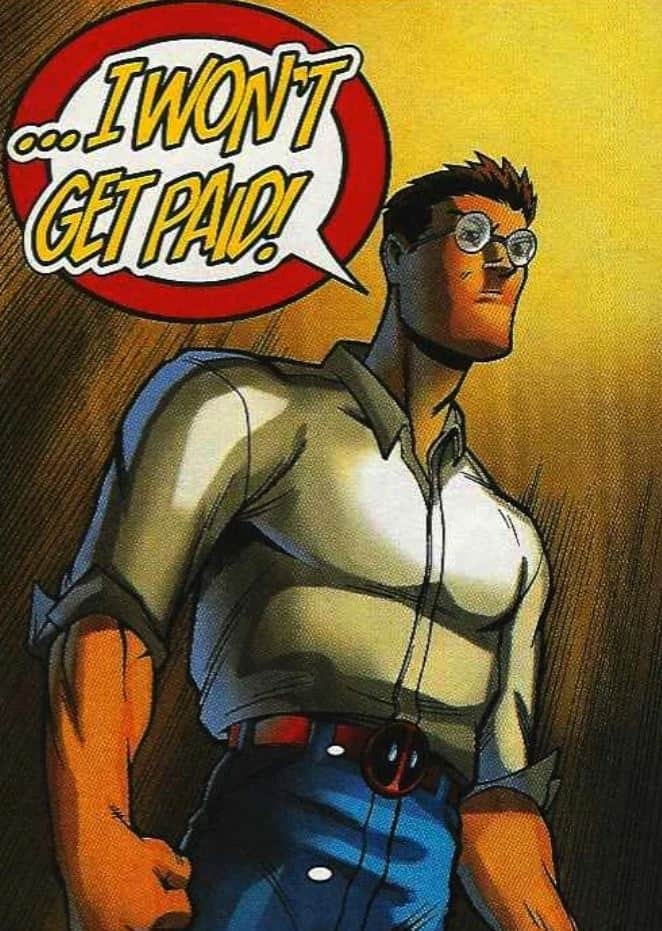
This is where it gets a little strange. The next time we see Weasel is in Deadpool: Assassin #1. He’s alive and well, and he and Deadpool are on good terms. In a situation much like their original one, Deadpool is killing people in the field, and Weasel is operating as his weapons dealer, his information broker, and his go-between. It’s even a much kinder relationship. There are a few good-natured barbs at Weasel’s expense, but that’s it.
Weasel has a pretty good life. He’s going by Jack (to everyone but Deadpool,) has a live-in girlfriend, and does his best to keep his professional and personal lives separate. The audience isn’t privy to how any of this happens or why, and in the end, it hardly matters. Because Weasel isn’t allowed to be happy. He’s killed before the end of the mini-series, just in time for his girlfriend to reveal she’s pregnant and be kidnapped in front of his dying eyes.
The strange part is that after this, Weasel comes back again, in Deadpool (Volume 7), #9, masterminding a plot to ruin Wade’s life so he would agree to become Mephisto’s personal assassin. It’s as if Deadpool: Assassin never happened. (Although it’s comics, so that could have been the case, though other things from that book did carry over to other series.)
To Weasel’s credit, he succeeds. He uses his knowledge of his former friend, the powers Mephisto grants him, and his own unparalleled gift for manipulation to train a pawn of his own and successfully ruins Deadpool’s life.
Of course, this is a deal with the Marvel devil we’re talking about, so when Mephisto fulfills his end and resurrects Weasel yet again, it’s without the hell powers. At the end of Deadpool (Volume 7) #15, he and Deadpool ostensibly patch things up yet again. So a casual reading of this scenario might indicate that it’s supposed to lead into Deadpool, Assassin. However, that’s not the case.
When Weasel next returns in Wolverine (Volume 7), #21 later, they reference the deal with Mephisto, but none of the events of Deadpool, Assassin. So we’re left to assume that’s just a normal comics-grade continuity snarl. Jack’s girlfriend and child are never brought up. Because he’s not allowed to be happy.
Speaking of: in Wolverine (Volume 7), #21, we find Weasel operating a high-tech inventing and repairing service for heroes, villains, and whoever can find him and pay. Deadpool looks him up, and Weasel nearly blows him away with an Atomic Annihilator. Because Jack Hammer knows that seeing his old friend is never good news.
After his “old pal” tells him about his new job, Weasel relents and provides Wade all the tech and assistance he requires. Primarily because he plans to get a little more vengeance and make off with whatever it is that Wade’s gonna collect. Of course, as soon as he gets his hands on it, it destroys Weasel’s burgeoning business and almost kills him before Weasel manages to escape.
That comic was released in June of 2022. As it stands, that’s the last we see of Deadpool’s oldest, most put-upon friend: running for his life. However, there is hope because there is another Weasel. One that lives a far happier life in Hollywood.
Brighter Universes
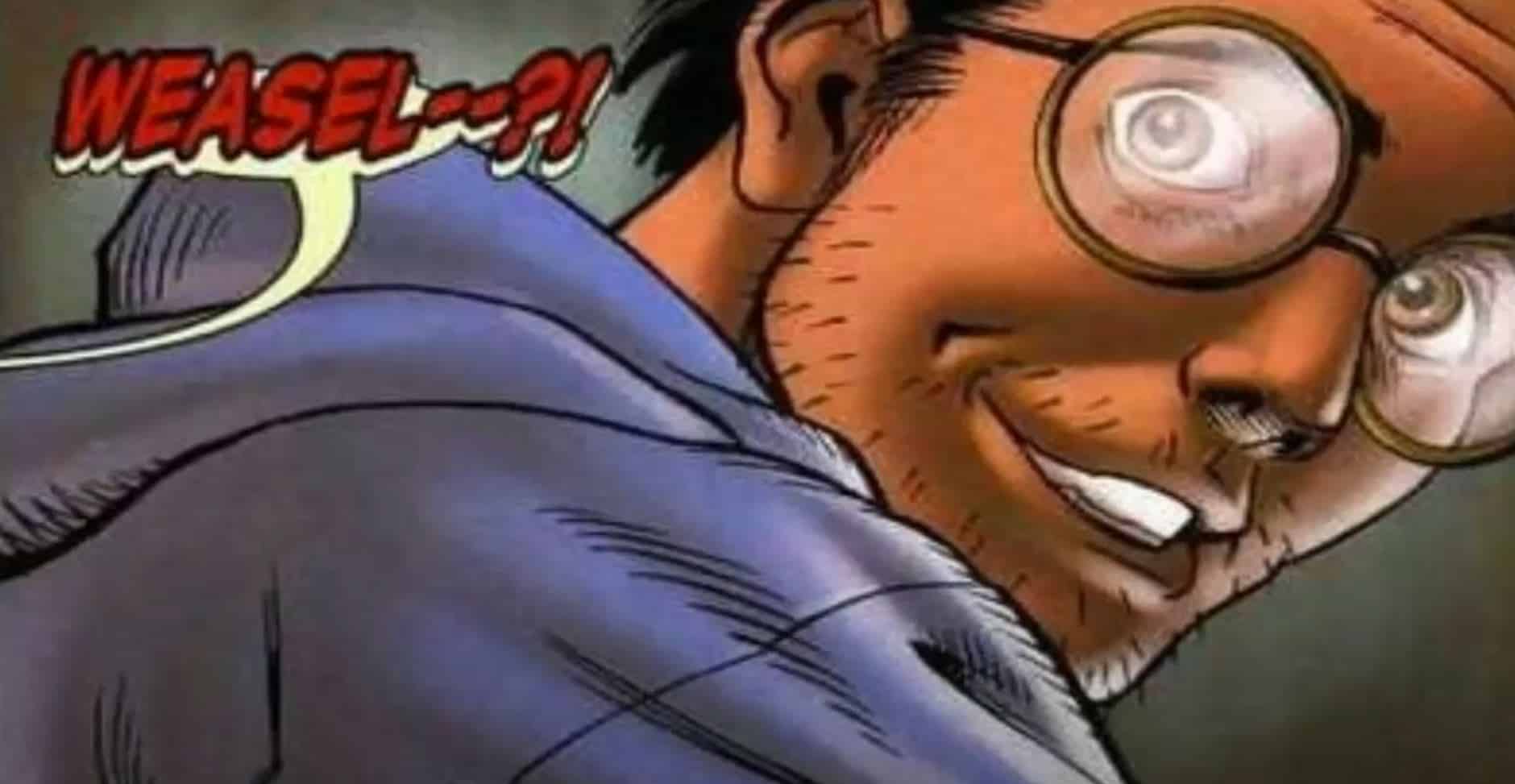
Weasel’s most prominent appearance outside of the comics is in the Deadpool movies, where we see a very different version of Wade and Weasel’s friendship. As in, they’re actually friends. They still shoot insults back and forth, but they care about each other. Weasel has boundaries and will not only tell Deadpool “No” but stick to it.
He’ll also TRY to protect Deadpool, but if the situation gets to a point he can’t handle, or he’s caught on his own, he’ll step out of the situation. When he’s captured, he spill the beans about Wade almost immediately because he both trusts that Deadpool can handle himself and because he doesn’t want to get hurt.
(His name IS still Weasel, after all.)
He’s also appeared as a major NPC in Marvel: Ultimate Alliance. Here, he gets to show off his scientific and hacking acumen as he helps the player track down a spy in the ranks of the heroes. (Although, in typical Weasel fashion, he’s shown to be playing as many sides as possible.)
Conclusion
Weasel is an interesting character whose only crime is that he’s the supporting cast for a literal psychopath. His in-universe life has been plagued by constantly being in someone else’s shadow. His publication history has been plagued with the fact that he is a supporting character rather than a leading man. He is always tied to Deadpool, regardless of what else happens, because he lacks the charisma and the popularity to escape and become his own stand-alone character.
Jack Hammer was created to give the original Deadpool someone to bounce off of. He was designed to be a more normal perspective into what it would be like to be around a certified psychopath who was trying to be a hero. It was very compelling storytelling. However, in the way of comics, characterization has marched on.
Deadpool has become a better person over time. Not out of development, for the most part, but because he’s been handed between writers often enough that his rougher edges have been flattened just because some saw a Wacky Badass in what was originally an Anti-Villain.
Weasel got both better and worse treatment because of his more inconsistent appearances. The lack of continuity means that while Deadpool’s characterization has changed over time, slow enough that many don’t notice a difference, Weasel’s lack of change stands out in stark comparison.
It means that when he shows up, trying to get vengeance for abuse from twenty years ago, the average comic reader doesn’t know what it’s about, and it just reads as “sour grapes .” Because of the framing of Deadpool as a hero, Weasel becomes a nerd who’s holding onto things he should have let go of long ago.
It’s not fair, just like the rest of Weasel’s life.
It is perhaps the greatest tragedy of the character that he is just popular enough to be remembered and dusted off when the writers need an acceptable target for Deadpool to get some pathos out of. His greatest nemeses are two groups he can’t bargain with: his writers and Deadpool’s fans. Because of them, Weasel is trapped in purgatory more surely than when he was actually in Hell.
He is doomed to forever be stuck in a revolving door of friendship, abuse, and betrayal until he somehow gets more popular than Deadpool.
With Deadpool only gaining in popularity with every subsequent movie release, and the iteration that committed those crimes further and further in the past, that’s not likely to happen anytime soon.
Essential Weasel Reading
- Cable #3 (1993) – Weasel’s first appearance, where he gets to be a bit of a badass.
- Deadpool: The Circle Chase 1-4, (1993) – The first proper appearance of the character.
- Deadpool (1997) #13 & 14 – When Weasel decides he’s had enough and walks away.
- Deadpool (2008) #23 & #36 – Weasel finally gets just a little payback on Wade.
- Spider-man/Deadpool #14 – Jack Hammer lets Deadpool know he still has his number.
- Deadpool, Assassin, 1-5 – Bar None, the BEST iteration of Weasel and Deadpool’s dynamic. It has a little bit of everything, including some of Weasel’s finest moments.
Frequently Asked Questions:
Question: Didn’t Weasel first appear in the Circle Chase?
Answer: No! It was only three pages, but his first appearance was in Cable #3 in 1993.
Question: Weren’t Wade and Weasel best friends?
Answer: In the movie? Absolutely. In the comics? It’s a little more complicated. In the early days? Kind of. Weasel was Wade’s only “friend,” but that was only because Weasel was too afraid to leave until Deadpool went too far, and Weasel left before Wade killed him.
Question: What are Weasel’s Superpowers?
Answer: Mostly just his scientific mind and his wits. He’s a genius inventor, and when he’s inspired to be, he’s a gifted strategist and manipulator. At various points, he’s designed super-suits to give him Iron Man-like powers, like when he became “The House” and protected the Las Vegas strip. (Until Wade showed up to ruin it.) He also designed a device capable of teleportation, which he used to dub himself “The Penetrator.”
After Mephisto resurrected him for the first time, he dubbed himself “Patient Zero.” He mostly schemed and plotted in the background. The second time he was working for Mephisto, he showed an ability for teleportation, time-traveling, and several other “Hellish” powers that were frustratingly vague. When he was truly resurrected, it was without those powers, so it didn’t exactly matter.

